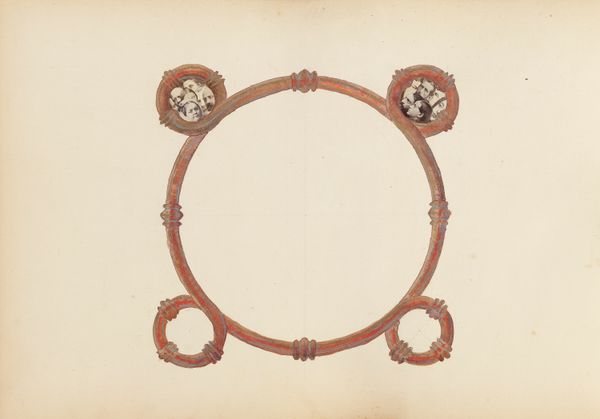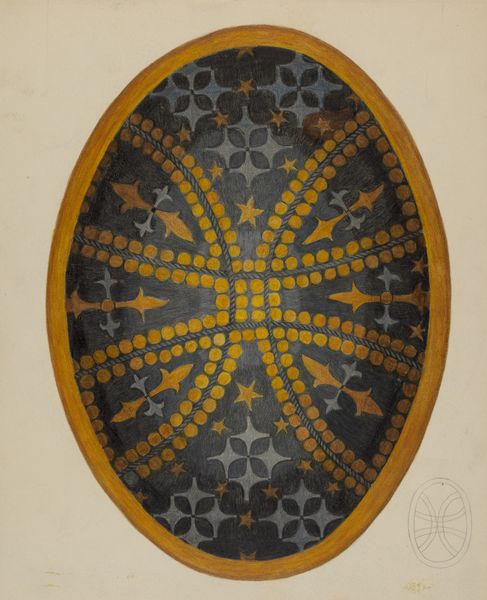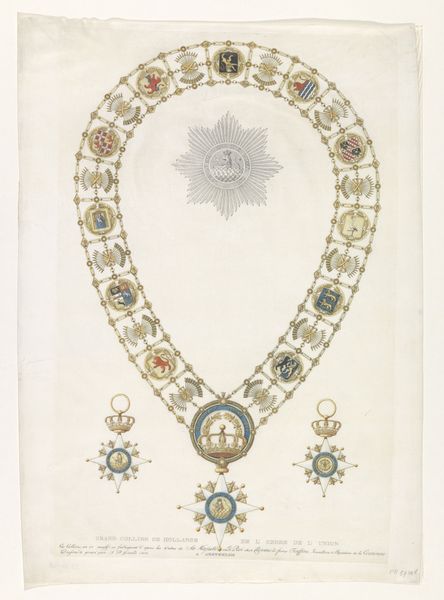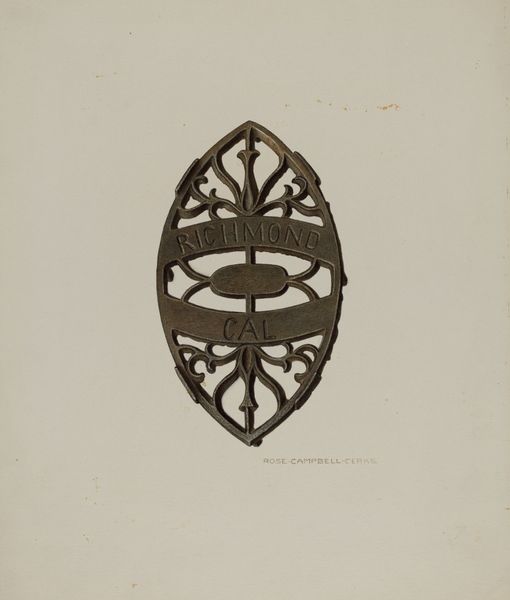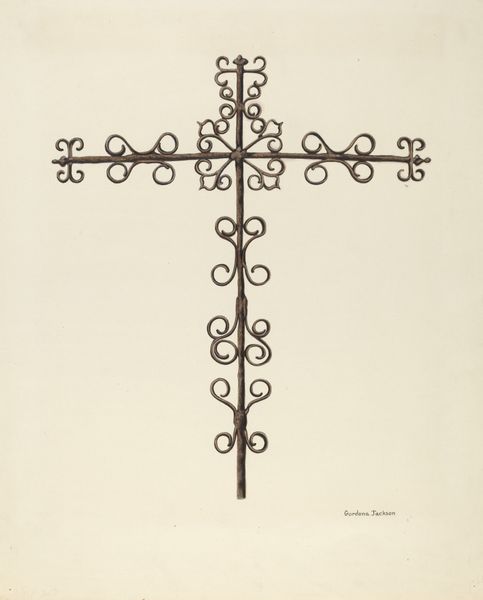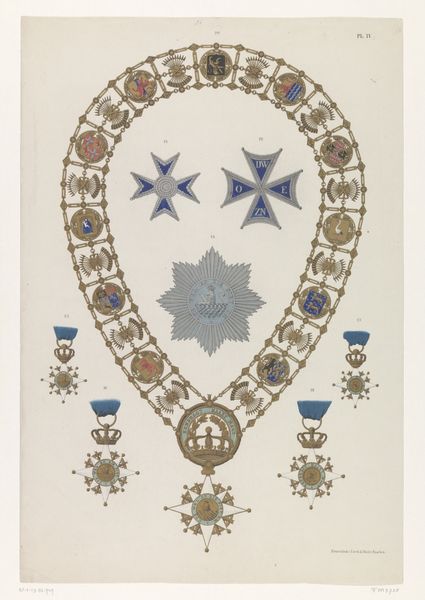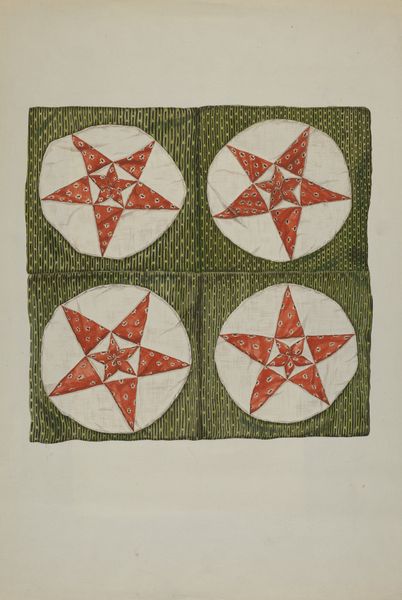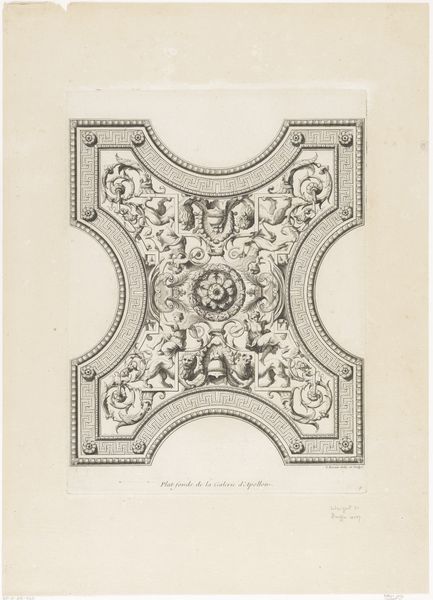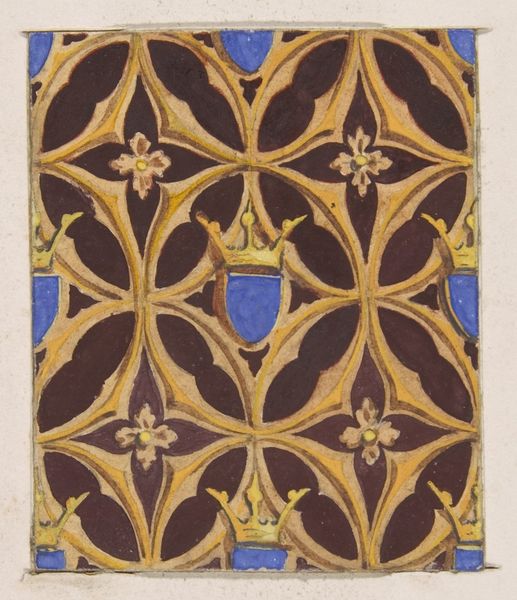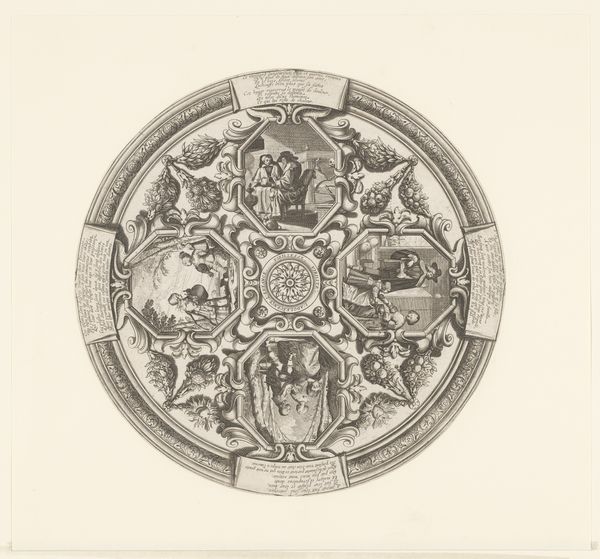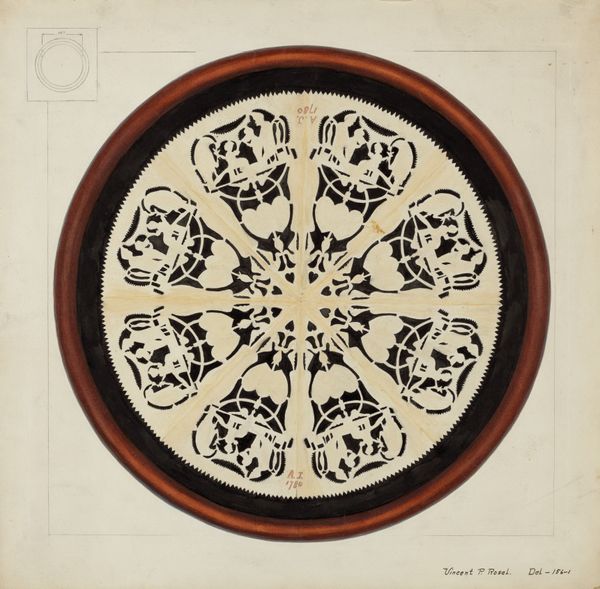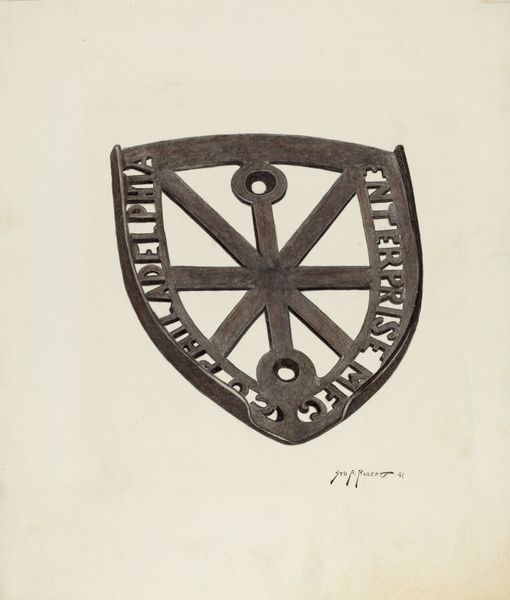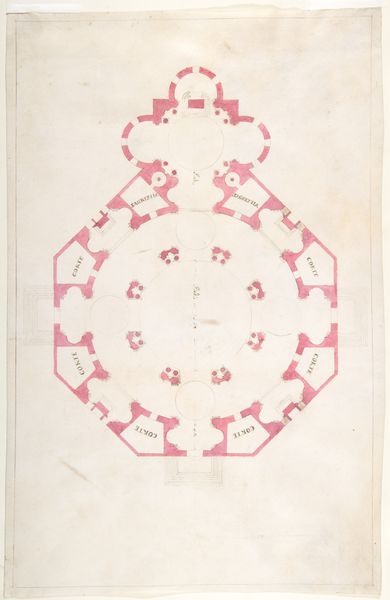
Around the Center. The Fourth 'Book of Schemes'. Album No. 1, the First Folder 1978
0:00
0:00
drawing, mixed-media, ink
#
drawing
#
mixed-media
#
ink
#
geometric
#
abstraction
#
modernism
Copyright: Valerii Lamakh,Fair Use
Curator: This intricate drawing, made with mixed media and ink, is titled "Around the Center. The Fourth 'Book of Schemes'. Album No. 1, the First Folder" by Valerii Lamakh, dating back to 1978. Editor: My first thought is a medieval emblem, or maybe an elaborate symbol from an alchemist's guide. The repeating geometric forms feel so contained yet suggest something expansive. Curator: It's compelling how these repeating symbols seem caught between representing something concrete and remaining utterly abstract. The circle itself, so ancient, feels like a container for powerful but ineffable ideas. Editor: Absolutely. Consider, too, that geometric shapes have frequently conveyed cultural meaning, and played roles in shaping Ukrainian Modernism—think of Malevich. The insistent geometries present a sense of order or perhaps a kind of esoteric knowledge, especially given its presentation as a ‘scheme.’ Curator: I am very interested in this repetition of patterns inside the circle. They bear echoes of religious icons. Even with an utterly contemporary approach, do they offer hints toward long traditions? Editor: Precisely! Think about how geometric forms, particularly circles and crosses, were co-opted and given symbolic purpose through their incorporation into cultural movements like modernism. The historical weight shapes their reception in an age of experimentation. Curator: What do you make of the gray ring itself and its ambiguous character? It suggests an enclosure of sorts, yet that inner space remains conspicuously blank. Is this circle one of protection or constraint? Editor: The vacant center is very provocative. If those shapes surrounding it express various socio-political agendas or iconographic meaning, then surely the "center" is some unclaimed territory ready to receive meaning or be inscribed upon, like an argument about civic imagination in modern life. Curator: I agree—this feels like both an enclosure and an invitation, not just toward the “center” within this composition, but a reflection upon all possible new beginnings that history offers. Editor: It also speaks volumes to art’s inherent paradox. It gains momentum by invoking past cultural frameworks while questioning the solidity of those foundations, leaving the viewer to wonder, is that progress or destruction?
Comments
No comments
Be the first to comment and join the conversation on the ultimate creative platform.
